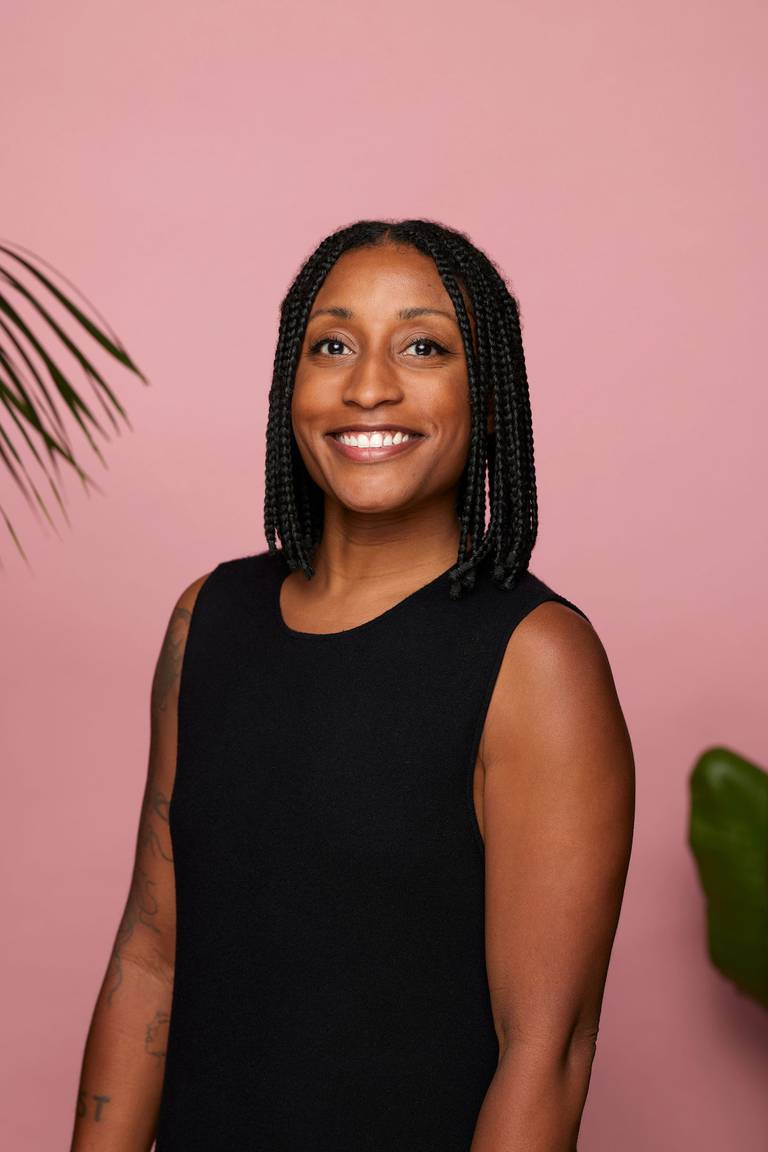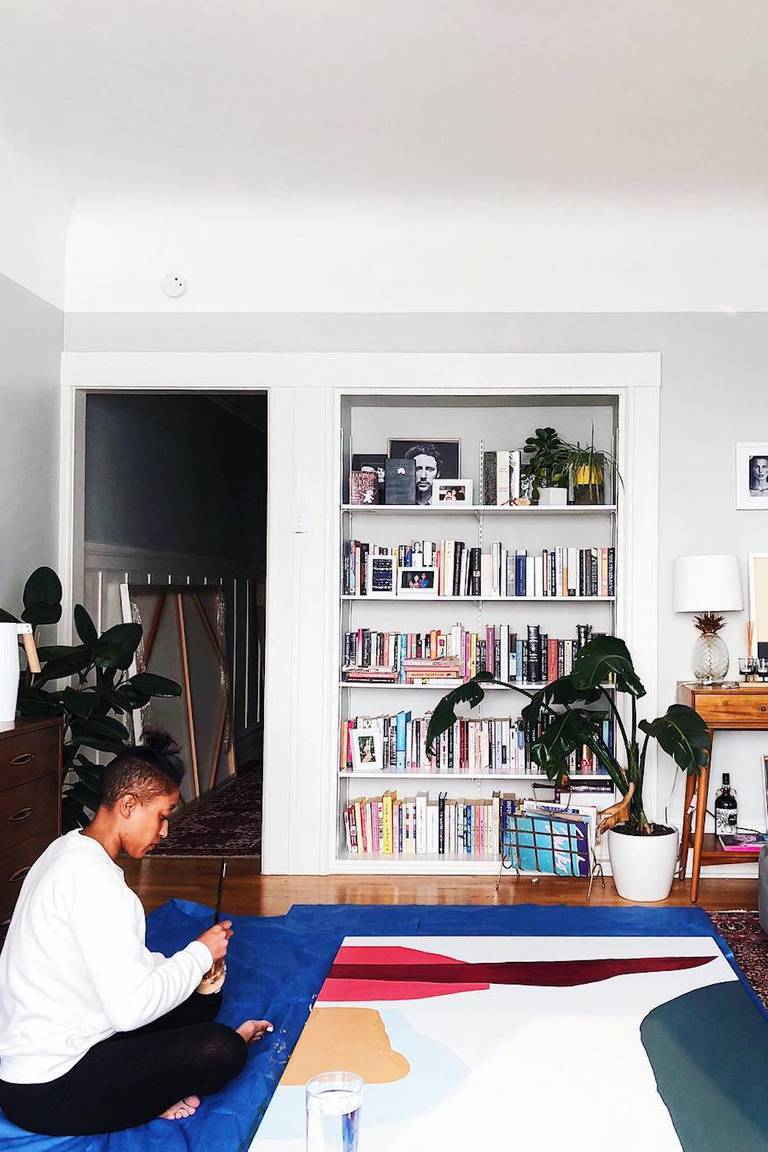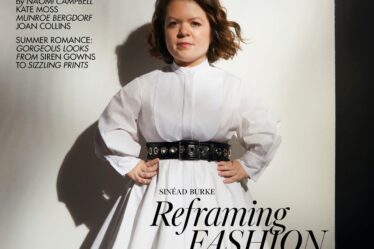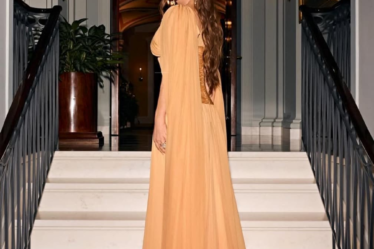
Discover 2,700+ job opportunities in fashion today on BoF Careers.
Amiyra Perkins, senior lead of creative strategy at Pinterest, began her career in fashion by studying textile and surface design at the Fashion Institute of Technology (FIT), before working as a freelance designer for Gap and Express. In 2010, she joined Victoria’s Secret as a print and colour concept intern and left as an associate designer in 2014.
Perkins went on to become a trend consultant and then director of consulting for WGSN, returning briefly to Gap Inc. to work as a senior designer in concept at Old Navy. Then, in 2021, she joined Pinterest in her current role.
“I did not listen to people when they told me no. [That] might be a character flaw, but I just really wanted to prove them wrong because […] what [did] I have to lose?” Perkins told BoF in the latest iteration of the Building a Career in Fashion series.
Now, BoF shares her careers advice and actionable insights from the event: Building a Career in Fashion with Pinterest’s Amiyra Perkins.
How did your career in fashion begin?
Growing up in a small town, [I was] devouring fashion magazines in the hopes of one day making it big. I really wanted to be a fashion designer, but I went to a job fair [where they said] maybe I should pivot. I was told about textile and surface design, and I applied for that kind of curriculum and opportunity at the Fashion Institute.
[Fashion design] was really competitive […] because it was [when] The Devil Wears Prada [premiered], and all of a sudden everybody wanted to work in fashion. So it actually was way more competitive than I thought it was going to be. But having the niche to go into textiles where you are adjacent [means] you are still able to work for these companies.
[…] I started out as a textile designer and now I work in tech as an advertising creative — that is an unexpected career path. [But] I like to think of it as a career portfolio. […] It is an interesting way of being exposed to different kinds of people and being able to see how they learn and grow and how they connect with products or brands.
How did you land your first role?
I was constantly on the ground trying to get internships. I purposely worked at the Express retail store across the street from their headquarters in the hopes of running into one of their executives — and it happened. I started a conversation and started slowly making my way in as an intern there.
That role moved into freelance work where I was able to come in a few times a week and work on their fabric team, then the same thing happened with The Gap. It was a summer internship and […] during school, I had the chance to go back and be a freelancer again a few hours a week, nothing too crazy, but just having the exposure to the industry was really important early in my career.
Retail [is] a challenging environment, but I highly recommend it [as a point of entry] because then you get this exposure to the brand in a way that you do not normally as a customer.
What drew you to work in concept design?
Concept design is essentially storytelling. You are crafting an incredible narrative to build out design direction. [You are] reviewing, analysing [and] devouring anything you can read and seeing how that ties back to fashion — as well as things outside of that industry — to be able to say it is going to have an influence on something that we are creating for the season, for the year. It also ties directly back into [the] mindsets of [the] demographics you are trying to reach. It is an incredible way of being able to visually communicate an idea.
It is important to know who you are and what you believe in and build that confidence for yourself, because not everyone is going to do it for you.
I was working on the print and colour team [at Victoria’s Secret] and I was very fortunate to be the right hand to the VP of that department. I was constantly raising my hand, [saying] “I want to know more about this colour. I want to know more about why you are putting these things together.” I started to build more narratives that way.
I also started to create my own likes and interests, curating that on the side and starting to tell different stories. […] There was a concept team that I wanted to be a part of that was separate [from] the print [and] colour team, and I asked for help. I said, “How would you want to bring someone in like me? What do you look for in your applicants?” They said, “You are not right for it.” […] I just kept leaning into it and really wanting to have an opportunity to work in concept — so I built those skills on my own and […] then it naturally shifted into trend forecasting as a career.

What was the biggest challenge and lesson learnt at the start of your career?
My biggest challenge was that I did not look like the people in my industry. I went through a lot more hurdles of trying to prove myself, [trying to] understand why I was not up for promotions or why I was not getting some of the projects that I really wanted — or, frankly, why people did not look like me in the industry. I was not seeing people at high levels that look like me and it was a huge deterrent.
By the time I took over running our quality vision team at WGSN, it was the first time I was able to lean into my own identity as a proud Black woman, to say, “Hey, I know what’s going on too. I bring this diverse perspective.” I wish I had had that quiet power earlier in my career because […] I was just trying to fit in. And the reality, in fashion, is that it is okay to stand out [and] be expressive.
The biggest lesson — I did not listen to people when they told me no. It might be a character flaw, but I just really wanted to prove them wrong because […] what did I have to lose? I was not up for the same opportunities, so I might as well go about it my own way. And after that person told me I wasn’t qualified to work in concept — 10 days later, I had a job at WGSN. My dream job.
You never know where your life is going to take you. Although it is incredible to surround yourself with people and community, it is also important to know who you are and what you believe in and build that confidence for yourself, because not everyone is going to do it for you. I feel fortunate that that was something I figured out early in my career and I have been able to rely on that as a tool throughout my career.
What advice can you offer someone looking to embark on a career in trend forecasting?
A lot of people that I formerly worked with were trained designers, a lot of them are journalists, some have gone to school for futurism. There are a lot of different facets of what the industry looks like. Some are data analysts who just happen to be very good at pulling out visual provenance of it.
The thing that is most important is, why do you want to do trend forecasting? Are you trying to tell a larger story? Are you wanting to understand macro shifts that are happening in the customer’s world, and how your work can help companies understand and distil what it is doing and how it might show up in its product?
Think about the kind of industry you want to work in and the kind of people that have these jobs. Study them — what are they doing? Where did they start out?
Every industry looks at insights, so think about the kind of industry you want to work in and the kind of people that have these jobs. Study them — what are they doing? Where did they start out? Is there anything that is similar to what you are looking for? Then just reach out and ask questions.
[…] I am a huge fan of building your network, as you never know who is to respond to you on LinkedIn or social. Now that we have social media, […] you are exposed to people in these careers and industries that you would not have been exposed to prior. That is [an] interesting and unique way to get your foot in the door and not [be] afraid to put yourself out there.
How can professionals transition into creative roles in fashion?
[Show] that you have the hard skills to do styling or design. […] What does your portfolio look like [and] how do you translate what you are seeing from your old merchandising background [for example] into how it might look? Are you paying attention to shifts on the runway or emerging brands, and are you bringing that into the way that you would think about styling?
There is a lot you can do even if you do not have a portfolio. Use your social media, Instagram, TikTok, if you really want to highlight that you have this interest in styling. [Consider] how you bring different ideas to life in a unique way for people to look at your skill set. When a resumé comes my way and it piques my interest, I go straight to their socials.
What makes a job application stand out to you?
[In a resumé], I love reading about someone’s skills. So [it is] hard skills — like what are the things that help you do your job — and your soft skills — how do you show up and how are you building culture? […] Having a little moment of a profile is also a nice snippet, especially for those who maybe don’t want to do a cover letter. […] If you are going for a job that is in a specific sector of the business, you can use similar language [and] align yourself to the role to say, “I am capable of doing this because I have this skill and this is how it transfers to this work.” […] Something I have always done is have a resumé for different types of jobs that I want.
It is not always a good thing to share your portfolio — make sure that it is password protected [and] be mindful of who is going to have access to it. Your art [and] creativity is yours, it is important to have ownership over it.
I love a cover letter. If you can craft it well, you can not really explain why your skills transfer to the job that you are wanting. Not everyone does it, but as someone who has done a lot of hiring, I read every cover letter that comes my way because I want to get a glimpse into who they are aside from what I can read on their staff resumé.
In terms of a portfolio, having a website or social media presence is more important than showing your work. Early in [your] career, they are going to make you do a project, [so] just be mindful of your own IP. It is not always a good thing to share your portfolio — make sure that it is password protected [and] be mindful of who is going to have access to it. Your art [and] creativity is yours, it is important to have ownership over it.
What areas in the industry do you predict to expand in the next few years?
Insights, [and] being able to visually communicate an insight [into] storytelling. There is a nice fusion between content creators and what insights could look like. That is a skill that not a lot of industries have tapped into. There are all kinds of insights teams, but that transition of what it looks like, how it actually might impact your design development, is something that is really exciting.
What is key to breaking into the fashion industry today?
Passion. Lean into it. Figure out how to build your network, figure out how to get that internship or that job that gets you a little bit closer, even if it’s just adjacent to the actual industry. Your passion is going to take you far. It’s something that I really [relied] on as a way of creating my own career.
Discover creative jobs in fashion today:
Senior Art Director, Omnes — London, United Kingdom
Editorial Senior Stylist, Massimo Dutti — Barcelona, Spain
Brand Image Specialist, Ralph Lauren — New York, United States
Content Creator, Fashion Nova — California, United States
Soma Trend and CAD Intern, Soma — Florida, United States
Creative Producer, Chalhoub Group — Dubai, United Arab Emirates
Disclaimer: This interview has been edited and condensed for clarity.



